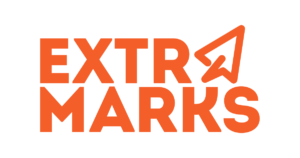How Can Small Schools Thrive In eLearning?
While eLearning has gained significant traction recently, much of the conversation centers around large school districts or corporate training. But what about small schools? The charter programs, rural campuses, microschools, or independent K-12 institutions where every resource counts? For these schools, the shift to online or hybrid learning offers exciting opportunities, but it also offers unique challenges. The good news? With the right tools and mindset, small schools are not just capable of embracing eLearning—they may be uniquely positioned to thrive in it.
What Are The eLearning Gaps For Small Schools?
Small schools often face limited staffing, tight budgets, and fewer course offerings, making it harder to adopt flashy new tech or extensive LMS platforms. Add to that the challenge of managing remote attendance, grades, student communication, and flexible schedules, and it's easy to see how the promise of eLearning can feel more overwhelming than empowering.
According to a report by Education Week [1], rural and small districts were among the most disrupted during the shift to remote learning. This was due not just to broadband limitations, but also staffing and resource constraints. Despite these challenges, many of these schools demonstrated adaptability and creativity, key traits for building resilient and flexible online learning environments.
What Are The Opportunities In Small-Scale eLearning?
Despite the hurdles, small schools have distinct advantages in making eLearning work:
- Closer student-teacher relationships make it easier to personalize learning.
- More nimble leadership structures mean faster implementation of new tools.
- Smaller student populations allow for more tailored scheduling and pacing.
These schools can move faster and test innovative formats like flipped classrooms, blended learning [2], or virtual electives, without the red tape that larger districts often face. Virtual Reality [3] is even becoming more accessible in eLearning environments, offering immersive educational experiences to schools with limited physical resources.
How To Plan An eLearning Strategy For Your School
Effective eLearning implementation [4] starts with a well-thought-out strategy. For small schools, this means aligning digital efforts with available resources, teacher capabilities, and student needs. Here's how to create a realistic and impactful eLearning plan:
1. Assess Your Current Situation
Begin with an honest evaluation of your school's digital readiness:
- Technology access
Do students and teachers have access to devices and stable internet? - Staff capabilities
What is the current level of digital literacy among teachers? - Student demographics
Are there students with learning disabilities or limited access at home?
This baseline assessment helps you identify gaps and prioritize investments.
2. Set Clear Goals
Define what you want eLearning to achieve for your school:
- Improve student engagement or attendance?
- Provide access to broader learning resources?
- Support individualized learning paths?
Use SMART goals (Specific, Measurable, Achievable, Relevant, Time-bound) to track success over time.
3. Choose The Right Platform
Select a system or platform based on your school's needs:
- Learning Management Systems for organizing lessons, assignments, and communication [5].
- Video conferencing tools for live instruction and interactive sessions [6].
- Assessment platforms to create quizzes, track performance, and provide feedback [7].
Choose platforms that are easy to use, budget-friendly, and scalable for your school size.
4. Design A Content Strategy
Plan how learning materials will be created, sourced, and delivered:
- Create custom content using visual and multimedia tools.
- Curate educational resources from trusted online sources and open-access libraries.
- Blend both approaches to customize lessons based on curriculum and student needs.
Ensure that the content is inclusive, age-appropriate, and aligned with your curriculum.
5. Plan For Training And Support
Even the best tools fail without proper training. Include:
- Professional development sessions on using digital tools [8] and teaching online.
- Peer support systems where tech-savvy teachers help others.
- Simple help guides for students and parents to reduce confusion and increase participation.
6. Communicate The Plan
Involve all stakeholders—teachers, students, and parents—early in the process:
- Hold orientation sessions or webinars.
- Share timelines, expectations, and support channels.
- Collect feedback regularly to make continuous improvements.
7. Start Small And Scale Up
Pilot the program with one grade or subject before expanding school-wide. This allows you to:
- Identify technical or logistical issues early.
- Gather feedback and adjust.
- Build confidence among staff and students.
Pro Tip: Think of eLearning not as a replacement but a powerful extension of classroom learning. With a strategic plan in place, small schools can create a digital learning environment that is engaging, inclusive, and scalable.
What Types Of Tools Do Small Schools Need?
For small schools, success in eLearning doesn't require a massive IT overhaul—just the right smart classroom equipment [9] that does the essentials well. Here's what makes a real difference:
1. A Student Information System That Fits Their Scale
A lightweight, cloud-based Student Information System (SIS) [10] allows staff to manage grades, attendance, and communication in one place, without the overhead of an enterprise solution.
2. Scheduling Tools For Online And Hybrid Learning
Flexible scheduling is crucial. Whether students are taking asynchronous classes, rotating between in-person and online formats, or accessing virtual support sessions, small schools need a scheduler that can handle non-traditional time blocks.
3. Parent And Student Communication Tools
Keeping families in the loop is critical, especially in eLearning, where face-to-face interaction is limited. Platforms that include built-in messaging, automated alerts, and parent portals simplify that communication loop.
4. Affordable And Scalable Pricing
Small schools shouldn't be locked out of EdTech because of minimum user requirements or high upfront costs. The most effective tools are those with per-student pricing, modular features, and low-lift onboarding.
5. Real-World Use Cases
Small schools across the U.S., particularly charter and independent schools, are increasingly embracing EdTech that supports their eLearning goals [11]. In many cases, it's not about doing everything digitally, but choosing just enough tech to make learning more flexible, personalized, and engaging.
Whether it's offering virtual electives to supplement limited course options or using online gradebooks to reduce administrative strain, these targeted solutions allow small schools to punch above their weight in the digital learning space.
6. Keep It Focused, Keep It Flexible
Small schools don't need big, bloated systems to succeed in eLearning. They need agile, purpose-built tools that reflect the way they already operate: small teams, close relationships, and mission-driven leadership.
Conclusion
eLearning doesn't have to be out of reach for small schools. With the right combination of flexible tools, strategic planning, and a focus on personalized learning, even the smallest institutions can deliver impactful, future-ready education. By embracing solutions that match their scale and needs, small schools can turn their size into a strength in the digital learning landscape.
References
[1] It's Not Just a 'Digital Divide': Survey Shows Variations in Districts' Coronavirus Response
[2] What is Blended Learning, and How Can it Benefit Modern Classrooms?
[3] How To Transform Classroom Learning With Virtual Reality In Education
[4] Are You Doing This? 5 Essential Steps To eLearning Implementation
[5] Discovering Learning Management Systems: Basic Functions And Benefits
[6] Top 10 Video Conferencing Systems For eLearning Professionals
[7] 8 Qualitative eLearning Assessment Methods To Track Online Learners Progress
[8] 11 Digital Education Tools For Teachers And Students
[9] 20+ Must-Have Smart Classroom Equipment for Modern Schools
[10] All You Need to Know About Student Information Systems (SIS)










